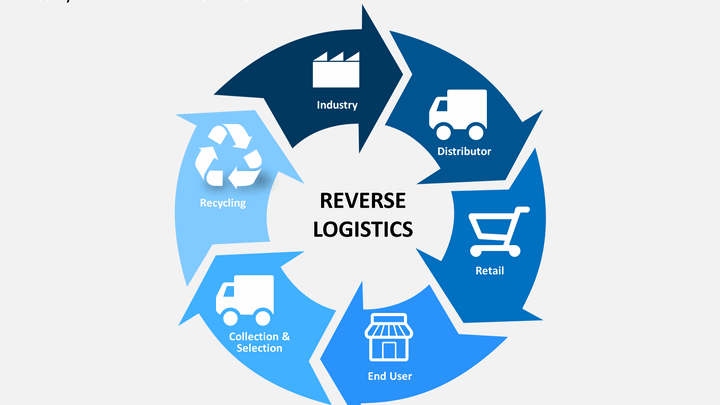Maximizing Efficiency: The Power of Reverse Logistics in Supply Chains

Image Source: Google
In the world of supply chain management, efficiency is key to success. One area that is often overlooked but has the potential to greatly improve efficiency is reverse logistics. Reverse logistics involves the process of moving goods from their final destination back to the manufacturer or reseller for various reasons, such as returns, repairs, recycling, or disposal. By optimizing reverse logistics, companies can reduce costs, improve customer satisfaction, and minimize environmental impact. Let's explore the power of reverse logistics in supply chains and how it can help maximize efficiency.
The Benefits of Reverse Logistics
Reverse logistics is not just about handling product returns; it encompasses a wide range of processes that can bring several benefits to a supply chain. Some of the key advantages of implementing effective reverse logistics strategies include:
1. Cost Savings
- Reduced transportation costs by consolidating returns and optimizing routes
- Minimized inventory holding costs by quickly processing returned goods
- Recovered value from returned products through refurbishment or resale
2. Improved Customer Satisfaction
- Faster processing of returns and exchanges, leading to happier customers
- Enhanced visibility and communication throughout the reverse logistics process
- Offering flexible return options can increase customer loyalty
3. Environmental Sustainability
- Reduced waste by recycling or refurbishing products instead of disposal
- Lower carbon footprint by optimizing transportation and processing methods
- Demonstrating corporate responsibility and commitment to sustainability
Key Strategies for Maximizing Efficiency
To fully harness the power of reverse logistics in supply chains, companies need to adopt effective strategies that streamline processes and optimize outcomes. Here are some key strategies to consider:
1. Implement a Reverse Logistics Management System
Investing in a dedicated system or software for managing reverse logistics can help centralize information, track returns, and automate processes. This can improve visibility, decision-making, and overall efficiency.
2. Optimize Return Authorization Processes
Establish clear and efficient return authorization procedures to streamline the return process for customers and internal teams. This includes providing easy-to-follow instructions, labels, and packaging for returns.
3. Collaborate with Partners and Suppliers
Build strong relationships with partners and suppliers to facilitate reverse logistics processes. Establish clear agreements and communication channels to ensure smooth coordination and timely resolutions.
4. Invest in Reverse Supply Chain Infrastructure
Allocate resources to develop a robust infrastructure for handling reverse logistics, including dedicated facilities, equipment, and trained personnel. This can improve processing speed and quality.
Technological Innovations in Reverse Logistics
Technology plays a crucial role in enhancing the efficiency of reverse logistics processes. Innovative solutions are continuously being developed to address the complexities of handling returns and managing product flows. Some of the latest technological trends in reverse logistics include:
1. RFID and IoT Tracking
Utilizing RFID tags and Internet of Things (IoT) devices to track the movement of products in real-time, enabling better monitoring and control of reverse logistics operations.
2. Data Analytics and Predictive Modeling
Applying advanced analytics and predictive modeling techniques to analyze return patterns, forecast volumes, and optimize reverse logistics strategies based on data-driven insights.
3. Automation and Robotics
Integrating automation and robotics into reverse logistics processes to enhance speed, accuracy, and efficiency in tasks such as sorting, refurbishing, and packaging returned goods.
Challenges and Future Trends
While reverse logistics offers many benefits, there are also challenges that companies may face when implementing and managing these processes. Some common challenges include:
- Complexity of handling diverse product returns
- High processing costs and resource requirements
- Lack of visibility and coordination across the supply chain
Looking ahead, future trends in reverse logistics are likely to focus on sustainability, innovation, and collaboration throughout the supply chain. Companies that embrace these trends and overcome challenges will be well-positioned to maximize efficiency and drive competitive advantage.
